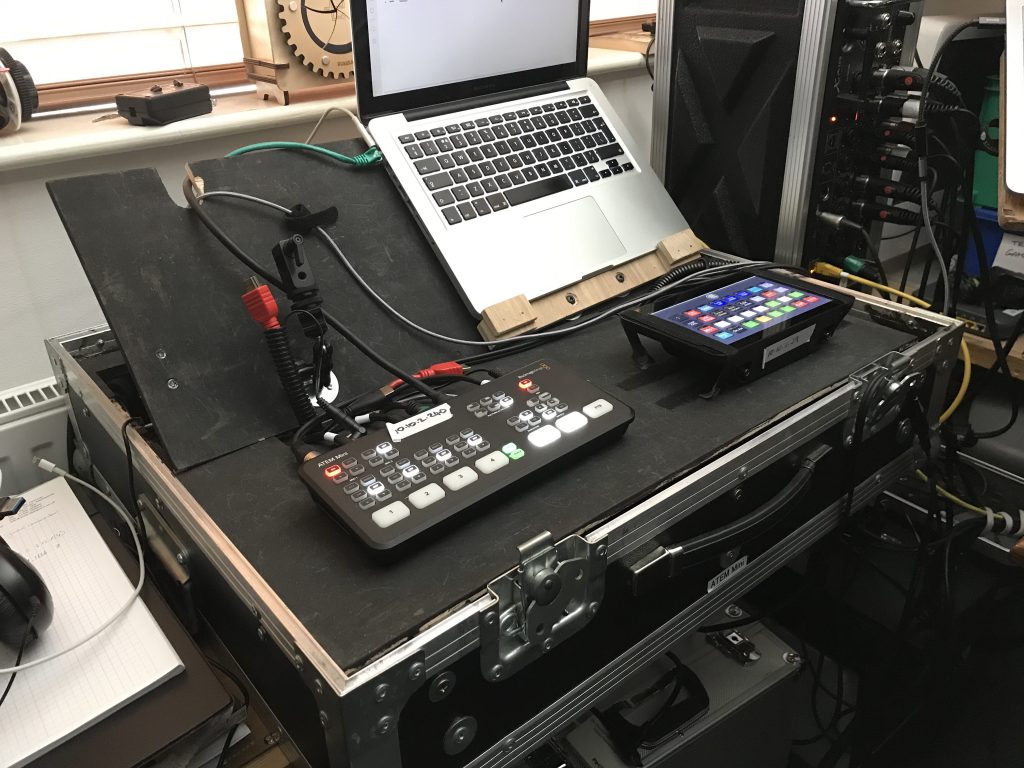My original post on the Companion Pi Touchscreen was written not long after being pleased at the results of getting it to work well enough to use in production situations.
I followed that up with the addition of a script to monitor the temperature of the Pi.
I thought it might be worth an update after a number of additions to the way I run the companion Pi software on this device, and some peripherals.

Streamdeck XL
After saving up, I now own a Streamdeck XL. I found that I still craved physical buttons that I could find without having to look at the device. It is plugged in to the USB port of the companion Pi and is running through a 10 meter active USB cable which boosts the signal for a long cable run. I don’t really need 10 meters, but I did want a bit more flexibility for being able to site the Streamdeck on a trolley that carries our main presenter computer.
The Streamdeck is powered by the Pi, and is configured in companion as a separate instance so the touch screen and streamdeck can show different button pages. I now mostly have the Pi touch screen showing a diagnostic page of buttons allowing me to see at a glance that everything is connected and running OK.
DMX host
The Pi also acts as a DMX host, running an Open Lighting Architecture host that allows me to control an Enttec DMX Pro MkII via artnet.
This allows me to use companion Pi as well as other software to control some DMX enabled lighting over the network.
Second screen
The Pi also has a second screen attached and with the aid of some custom scripts can play youtube clips at the touch of a button. I use this for some animated backgrounds for zoom calls where the Atem controls the greenscreen.
I do have one problem with the second screen… when it is attached it halts the boot of the pi until it is detached. So I don’t have it atached now until after booting it, which is not ideal. Hopefully I will find an answer at some point.
But why is the Pi doing all these things?
The Pi is now part of a ‘flypack’ which acts as a portable hub for my increasingly complex puppet shows! I want to be able to control everything from a single point – which is often behind a puppet theatre curtain, and with the aid of companion, qlab and DMX, we can put on quite a nice show. Or we will be able to once we can get out of the house again after lockdown.
I’ll write more about the flypack and it’s design in a future post.